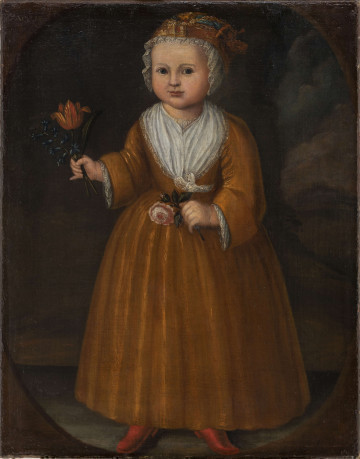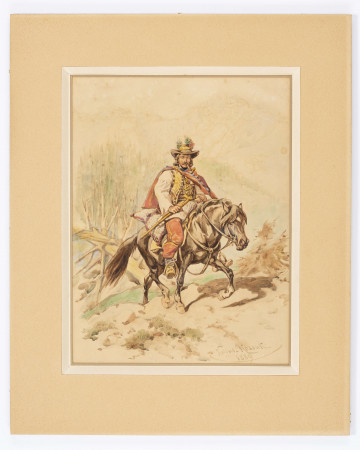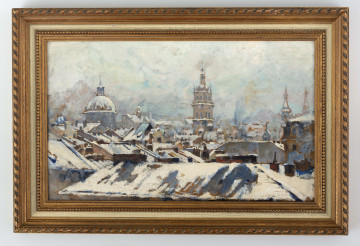
Portrait of a little girl
1750 — 1755
National Museum in Lublin
Part of the collection: Portrait painting
Lublin-born Józef Pankiewicz occupies an important place in Polish painting at the turn of the 19th and 20th centuries. His work is characterised by diversity, resulting from the constant search for his artistic language. His activity, lasting over fifty years, is divided into several stages crowned with outstanding works. The first paintings were maintained in the realist convention. In the 1980s, he created compositions inspired by the art of C. Monet, which, together with the canvases of W. Podkowiński, initiated Impressionism in Poland. They were poorly received; the discouraged painter experimented with colours and turned to monochromatic, melancholic symbolic painting. The symbolism of 1892-1903 included three types of representation: nocturnal landscapes, city nocturnes, portraits. Among the portraits, there are numerous images of children. The best known is Dziewczynka w czerwonej sukience [Girl in a Red Dress] from 1897 (Józia Oderfeldowa), which evokes associations with the paintings of J. Whistler and O. Boznańska. A miniature Portret Henryka Jasieńskiego [Portrait of Henryk Jasieński] comes from that time. Limited to a few cool colours – white, grey and brown – a contemplative mood of solemnity characterises the portrait of a fair-haired boy. The boy who posed for the painting was the seven-year-old only son of Teresa née Łabęcka and Feliks Jasieński – a critic, patron and collector, creator of a collection of Japanese art. Pankiewicz and Jasieński became friends in Warsaw, where they lived before 1900, although they are eventually associated with Krakow and Paris. The painter shared a fascination with Japanese culture, which he incorporated into his paintings, among others in the portrait of a friend at the piano (1908). Jasieński left the capital discouraged by the failure of the exhibition of his collection, which for the first time showed such a wide range of objects from the Far East. He went to Krakow, where he became a legendary bohemian figure nicknamed Manggha. Pankiewicz took up the post of professor at the Academy of Fine Arts in Krakow. At the Paris branch of the academy, which he ran, he gathered a group of students who as future colourists shaped Polish art for the next few decades. Henio Jasieński (1888-1967) became a Krakow architect and conservator. He was painted several more times by different artists. In the collection of the National Museum in Lublin, there is his portrait made by W. Weiss.
Bożena Kasperowicz
Author / creator
Dimensions
cały obiekt: height: 35 cm, width: 42 cm
Object type
painting
Technique
oil technique
Material
canvas, oil-based paint
Creation time / dating
Creation / finding place
Owner
The National Museum in Lublin
Identification number
Location / status

1750 — 1755
National Museum in Lublin

1889
National Museum in Lublin

1923
National Museum in Lublin
DISCOVER this TOPIC
National Museum in Szczecin
DISCOVER this PATH
Educational path